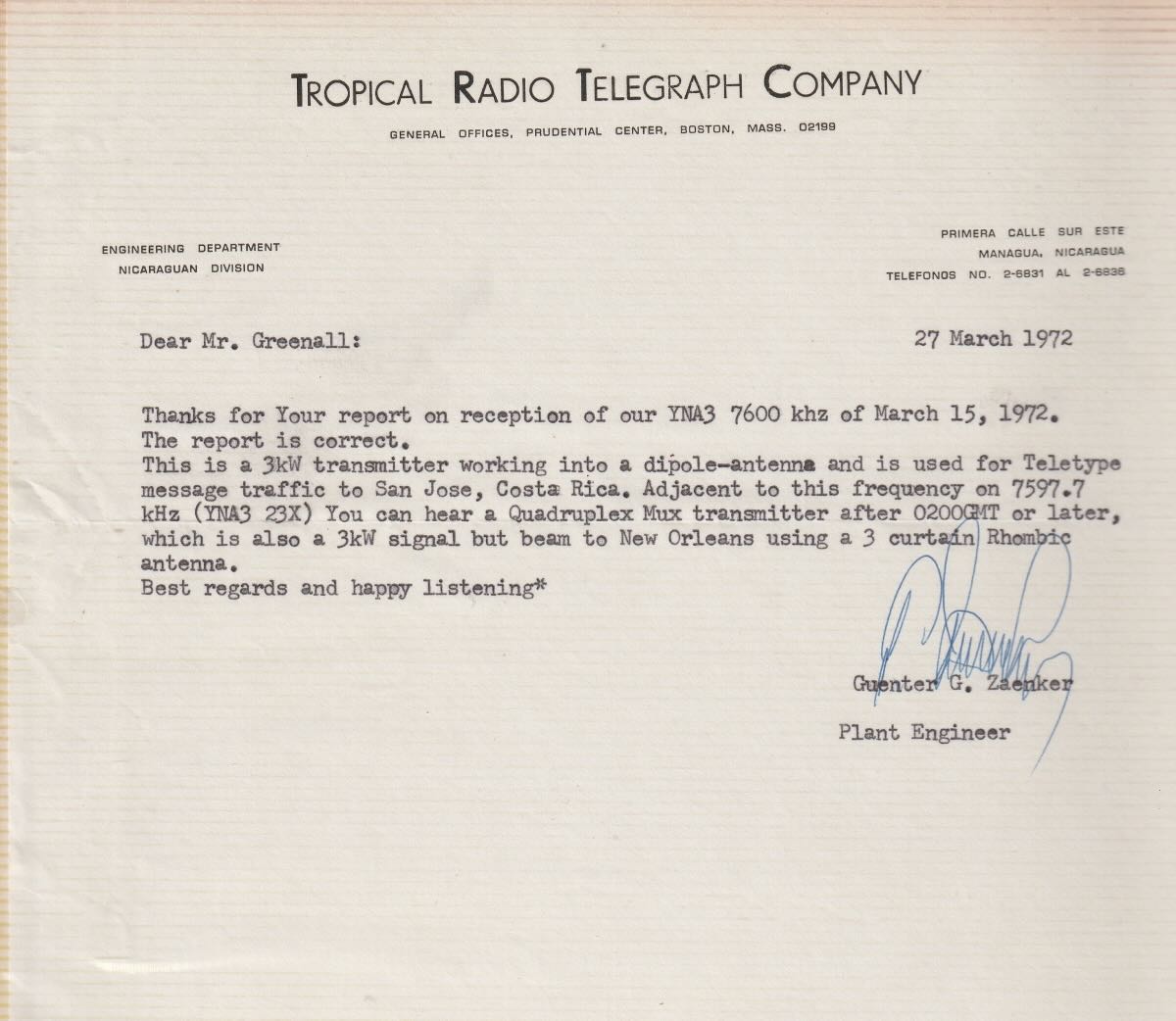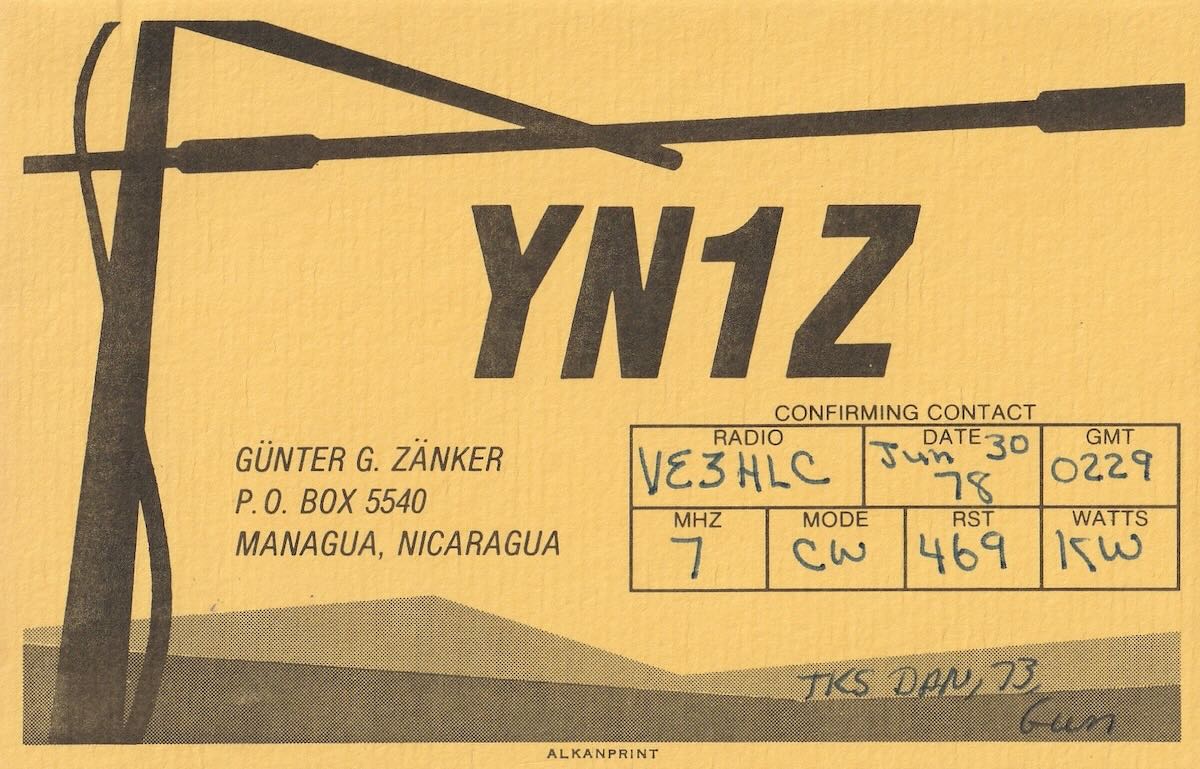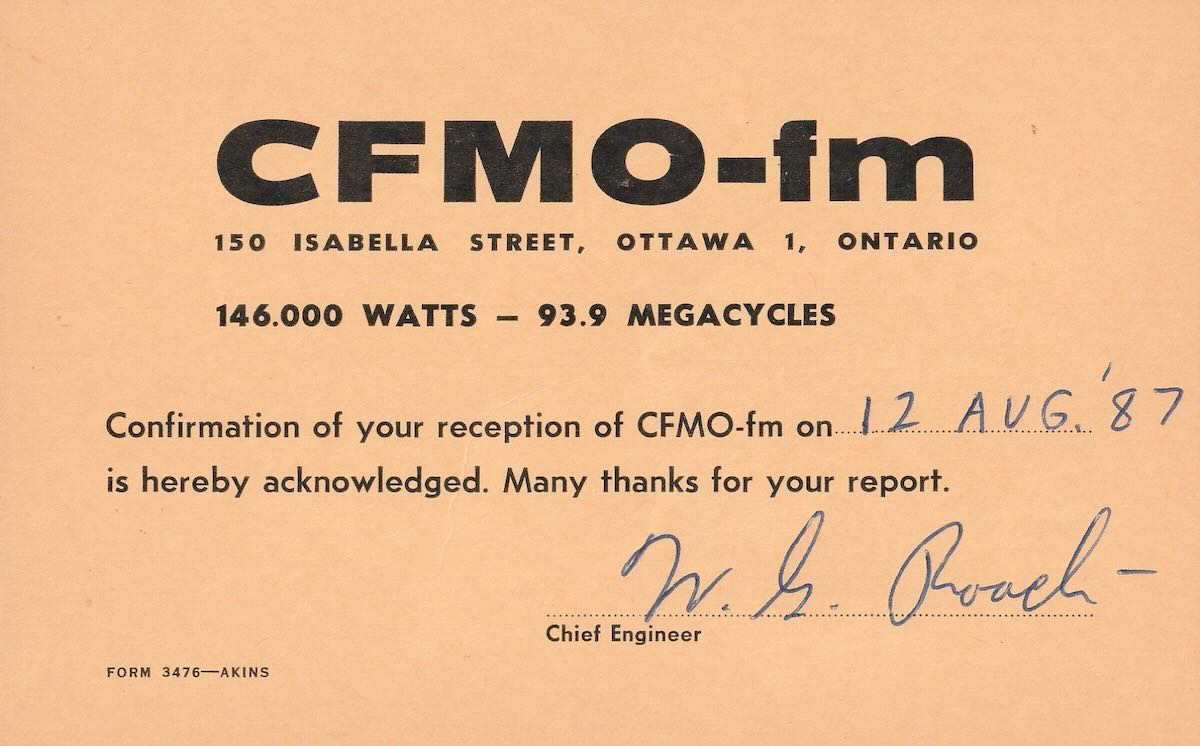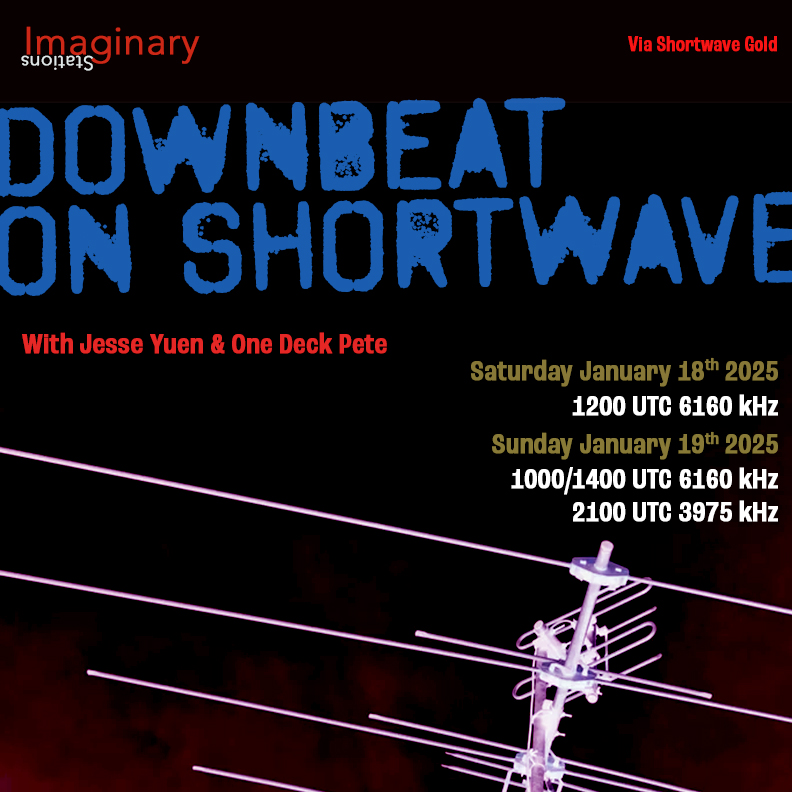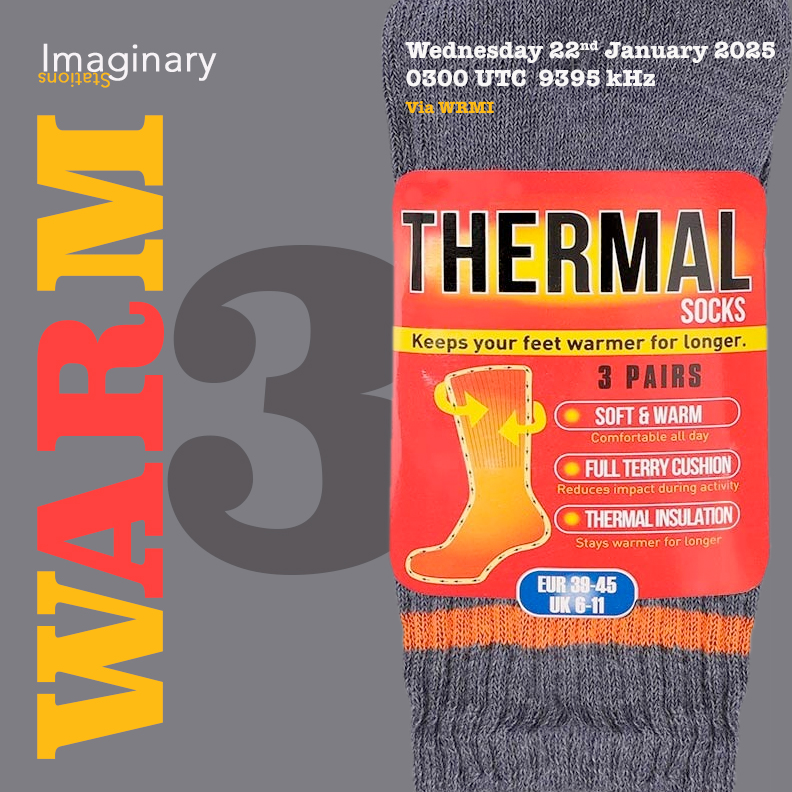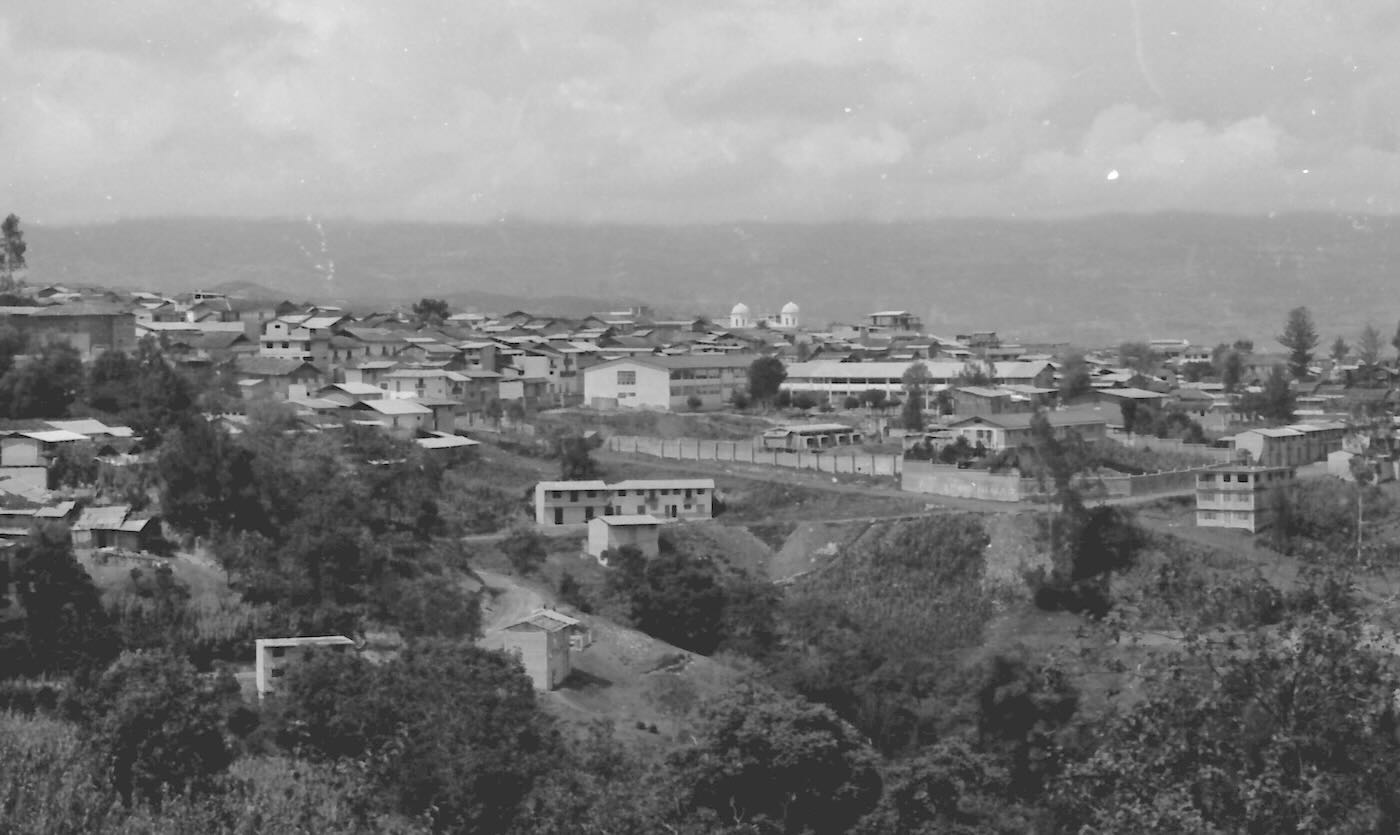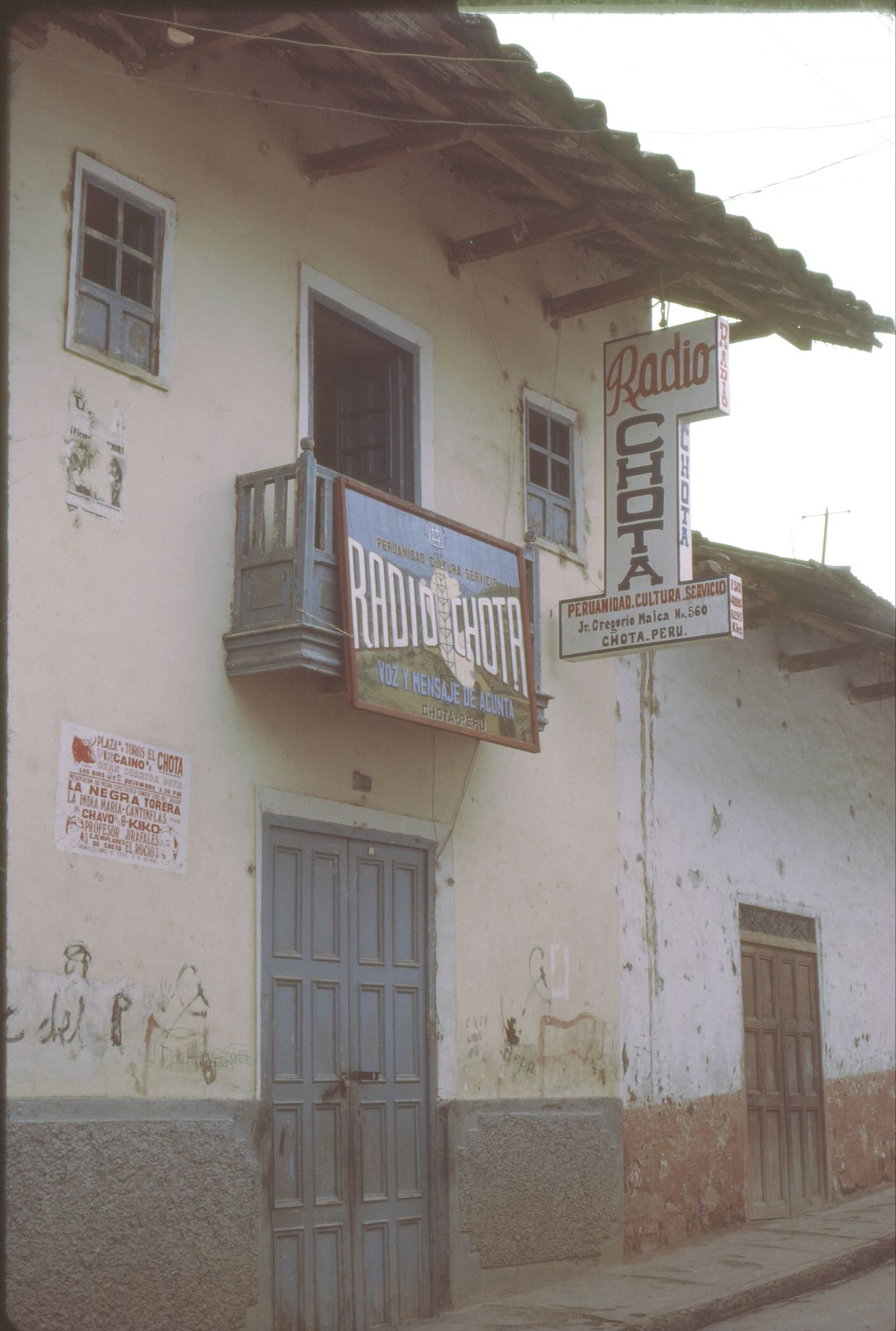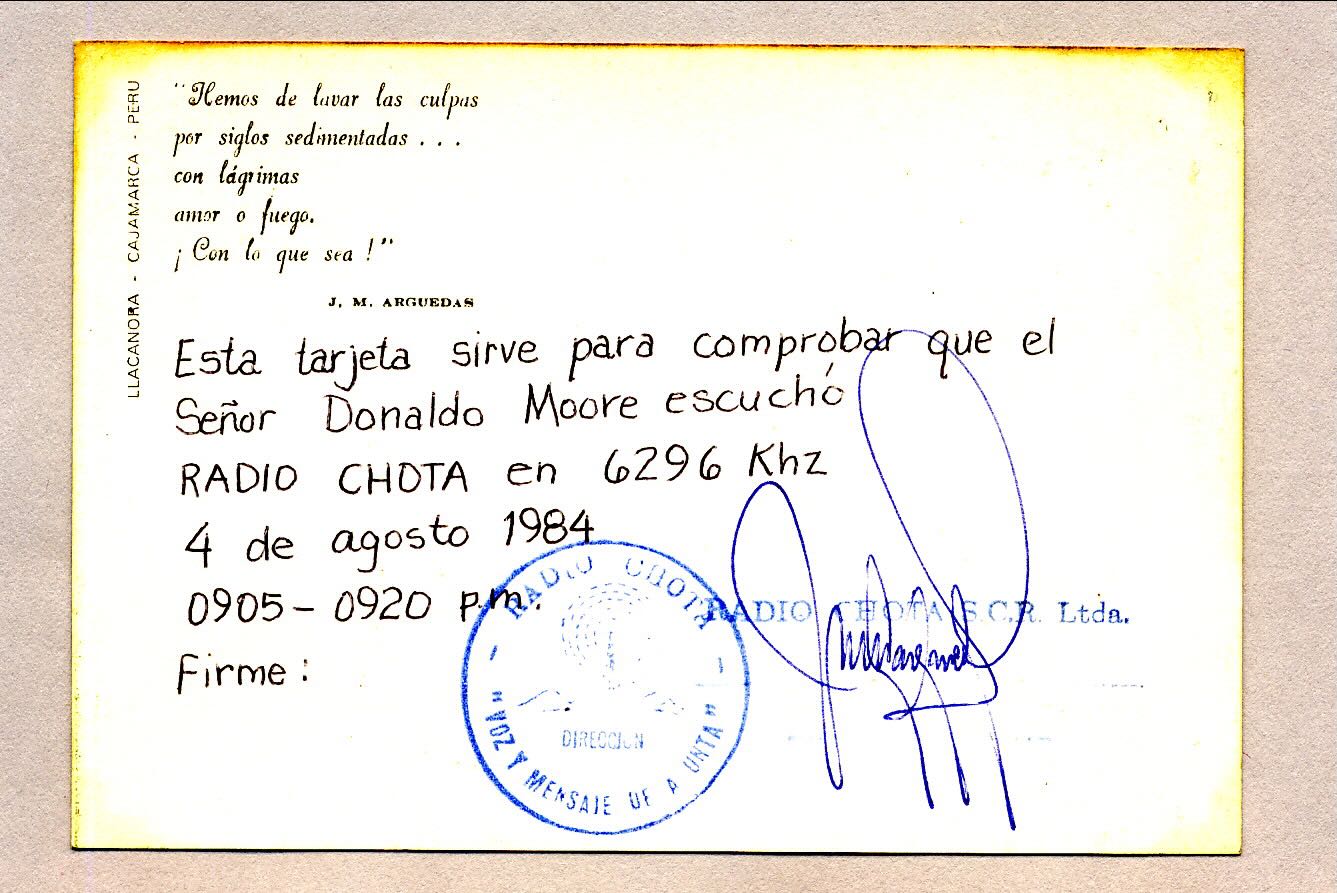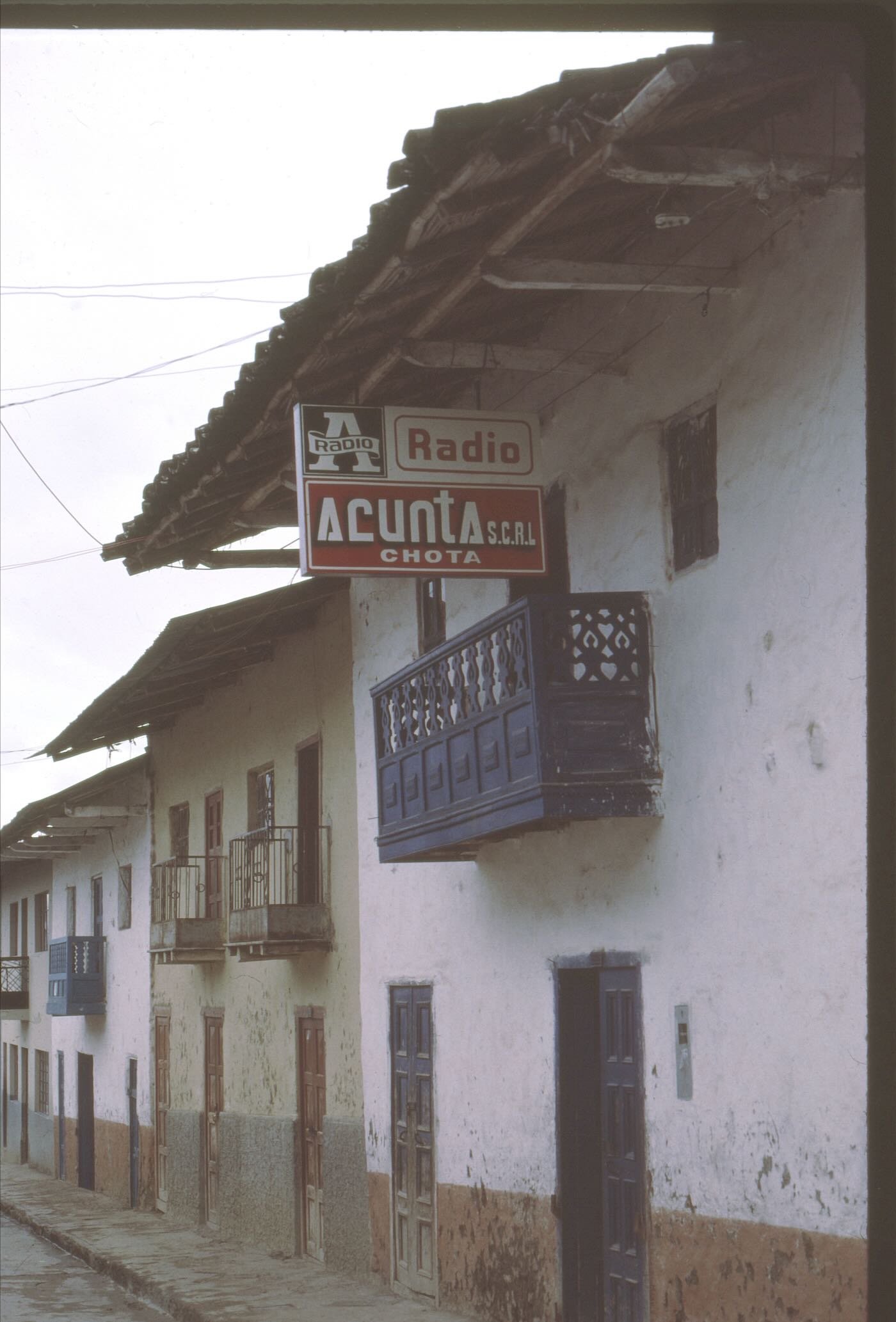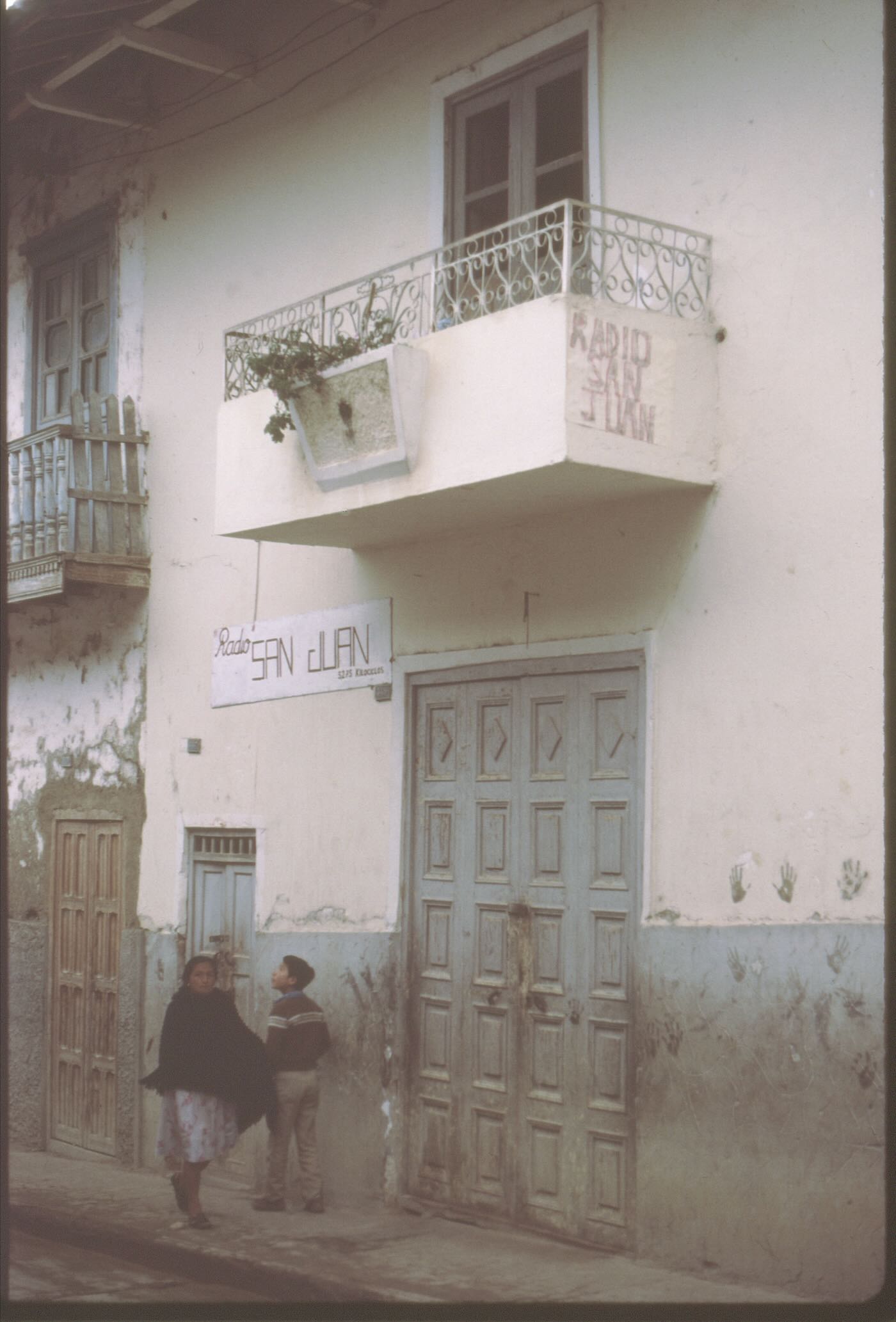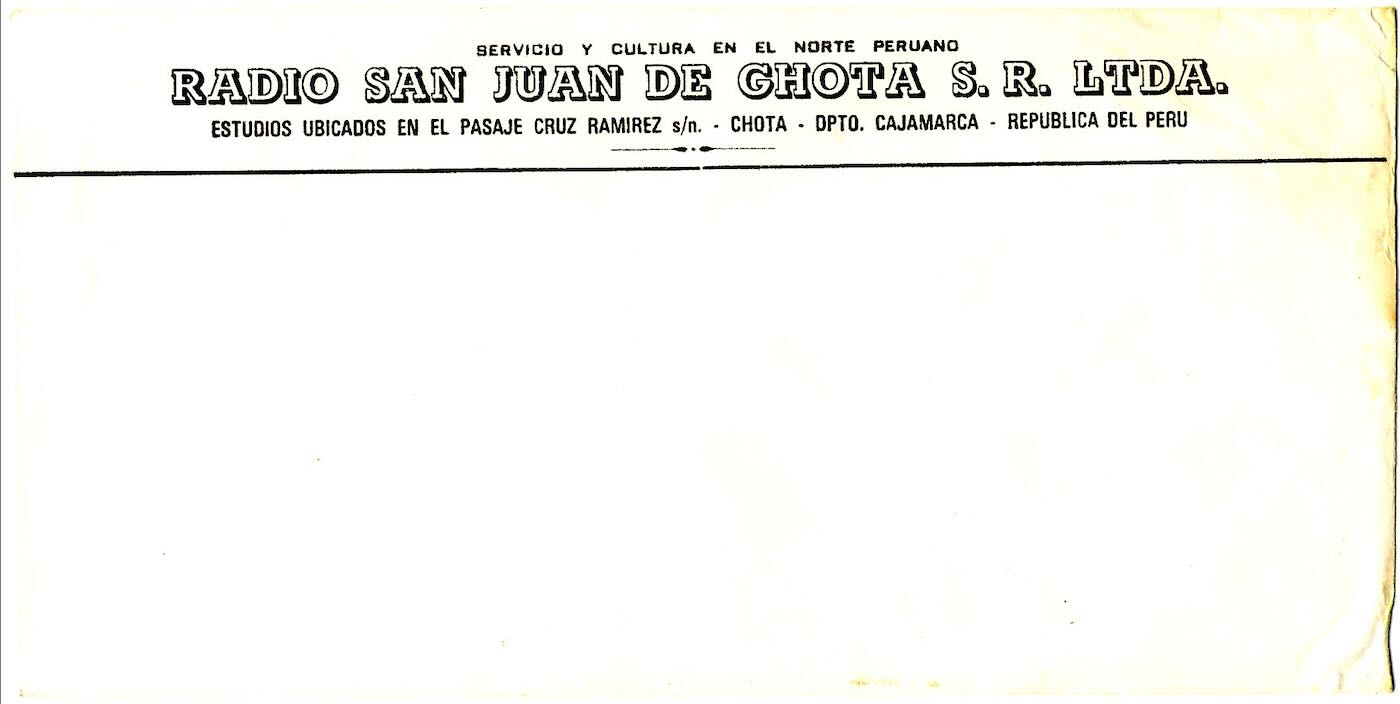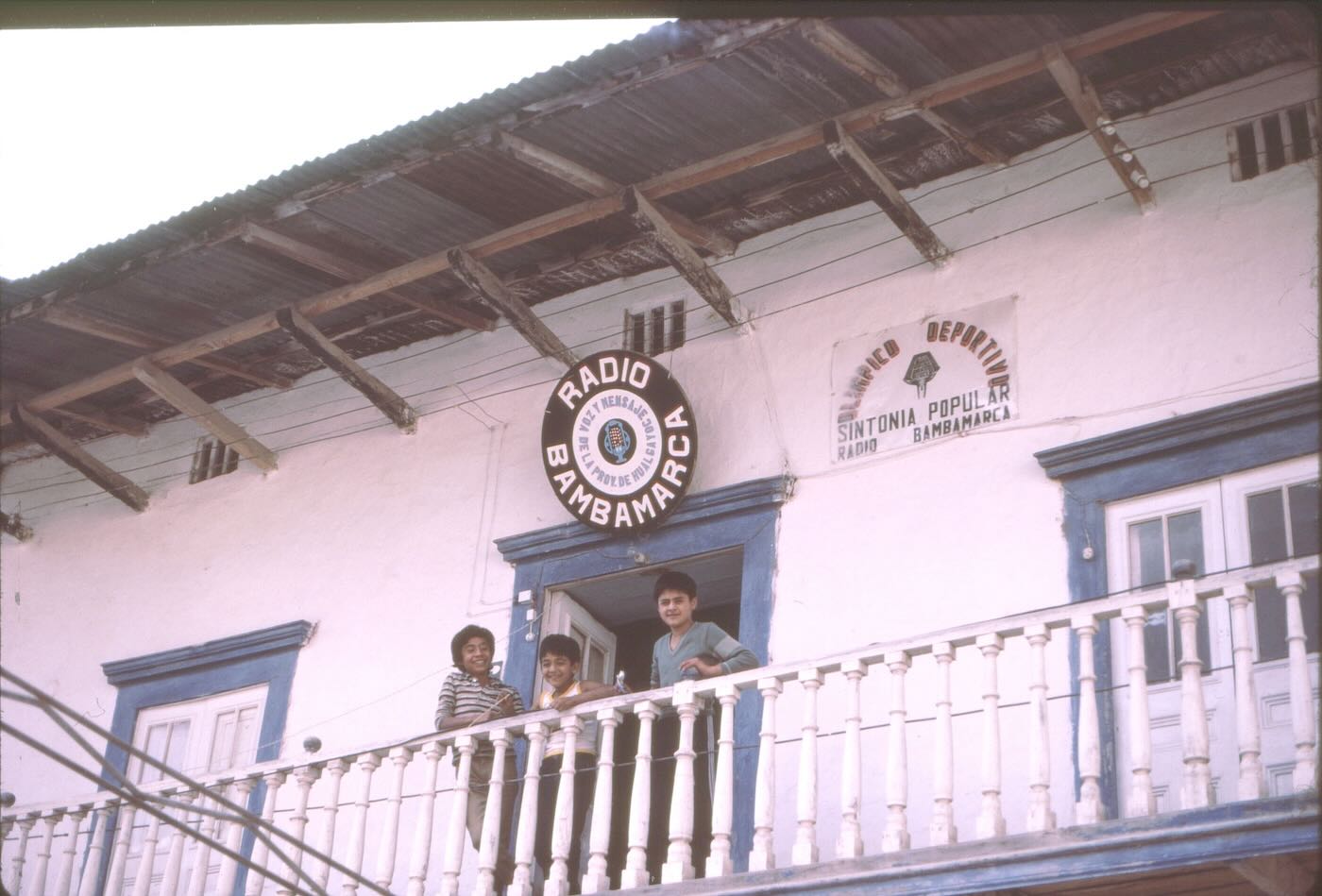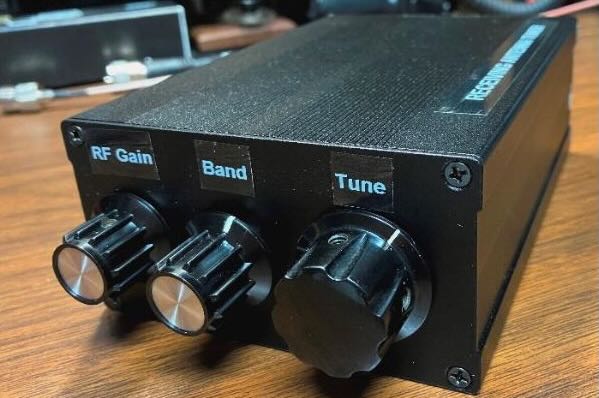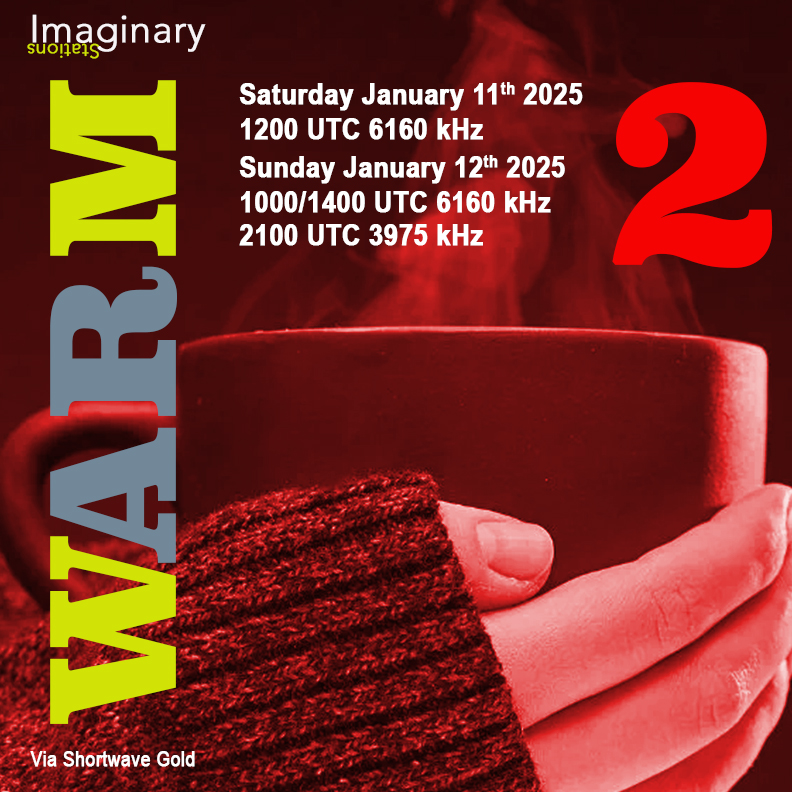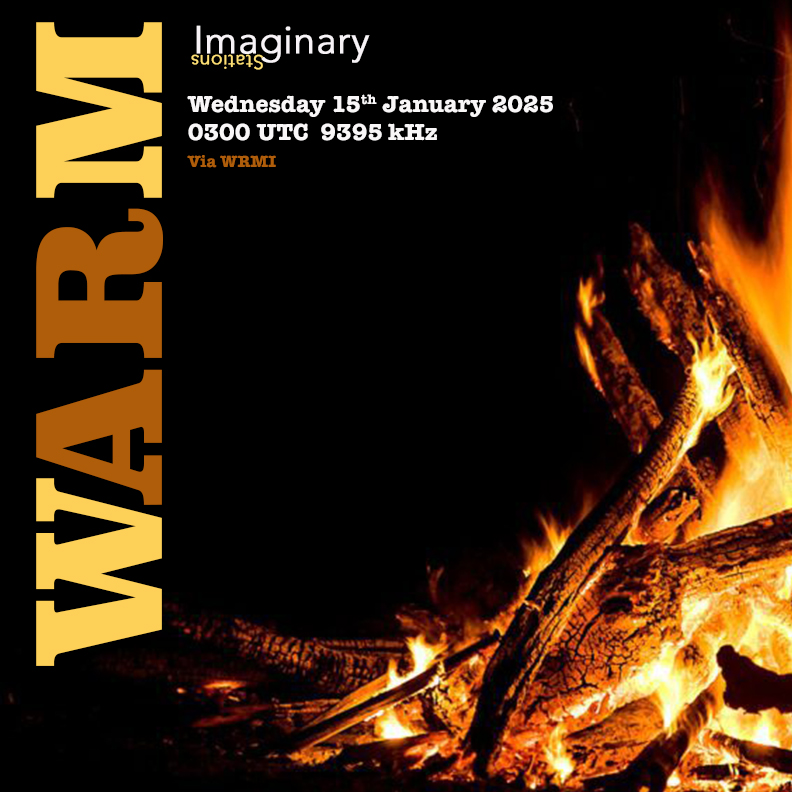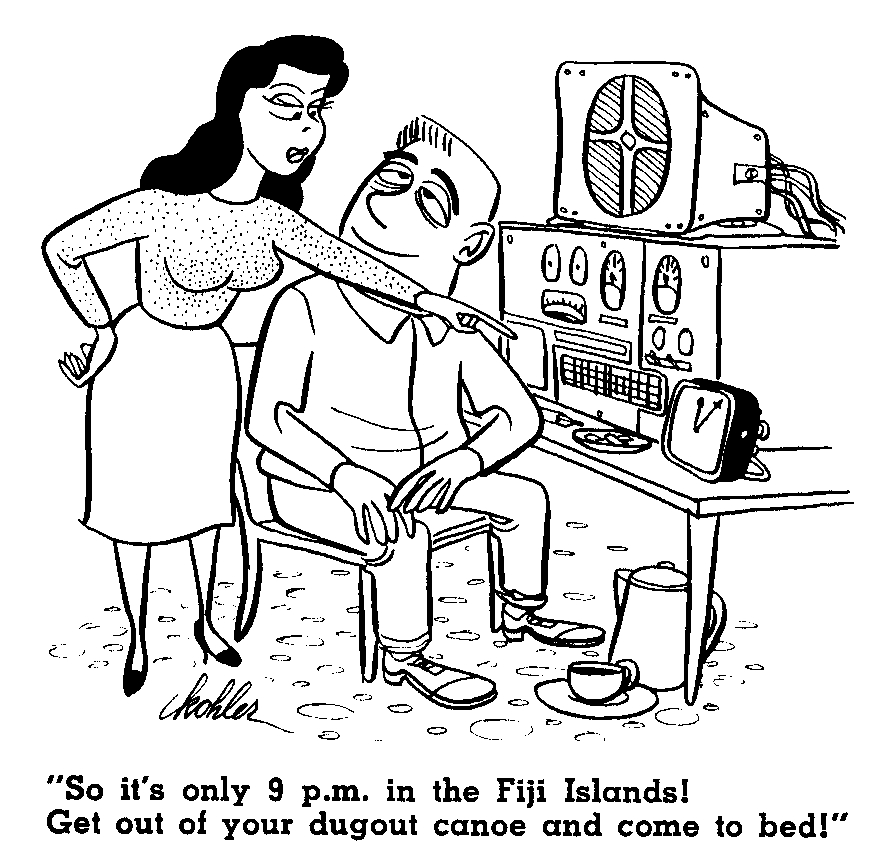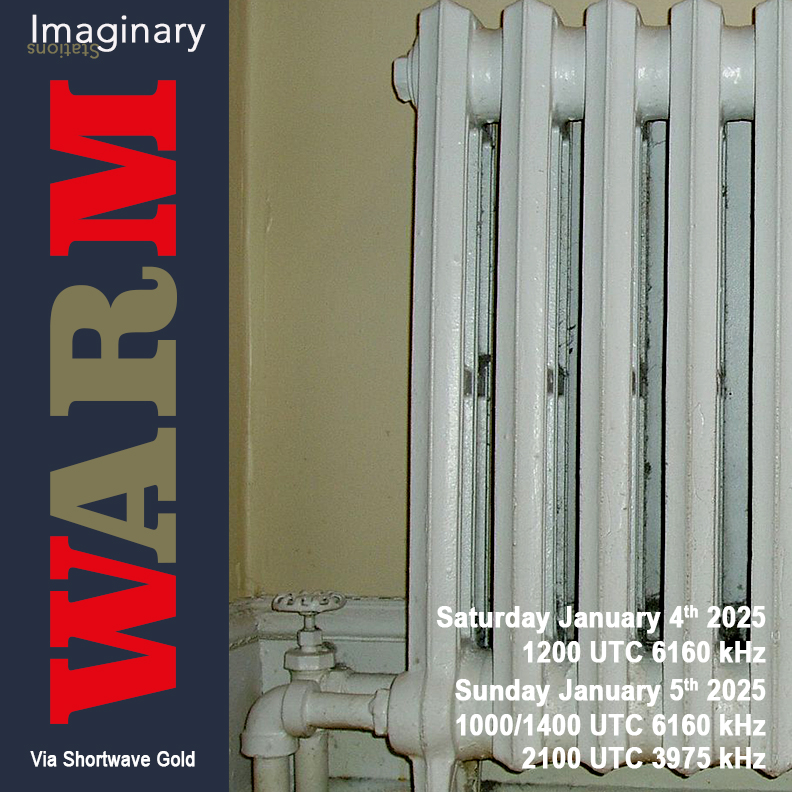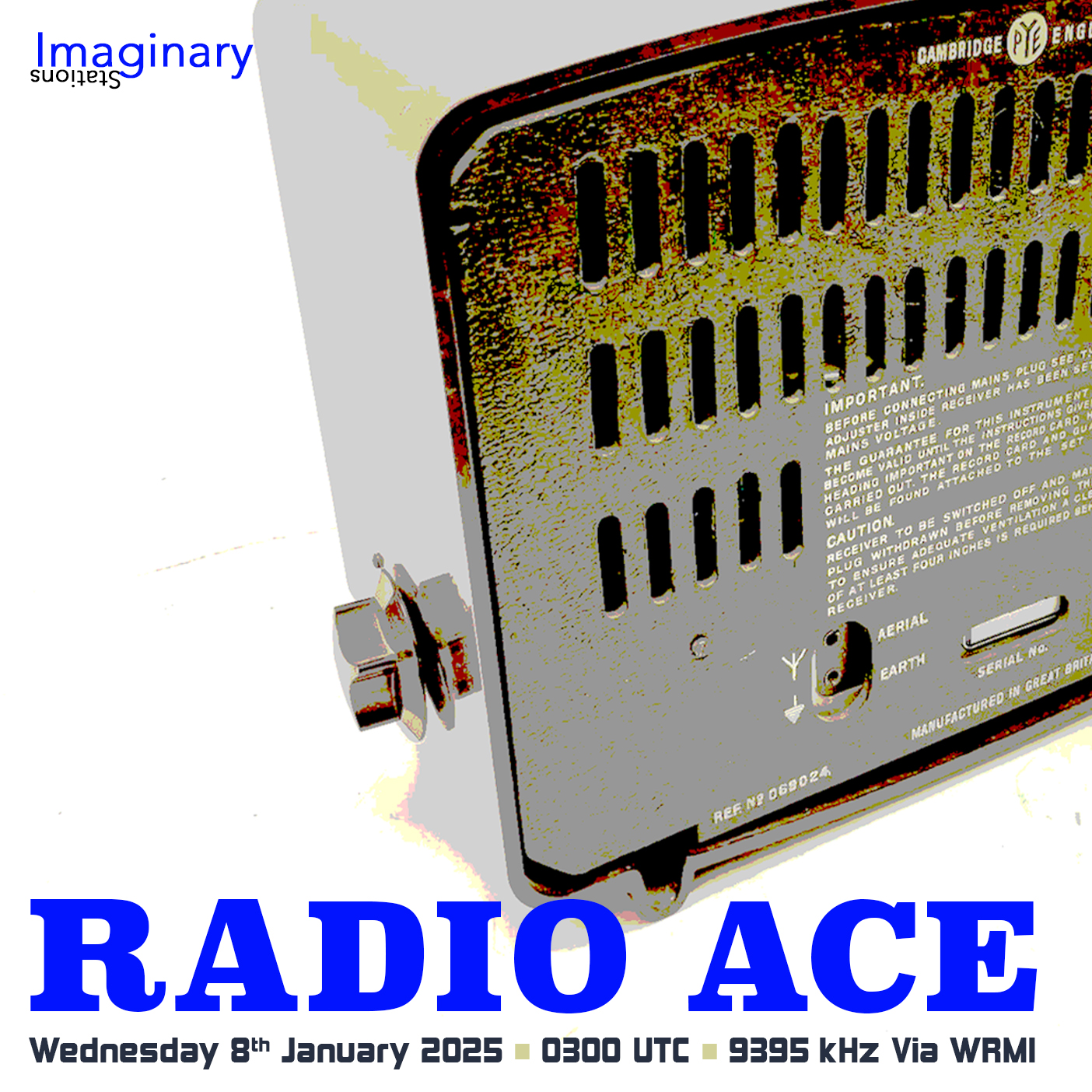When the SWL and Amateur Radio hobbies meet
by Dan Greenall
Many of us who are also amateur radio operators, got their start in the hobby through simply listening to shortwave radio, or perhaps, to stations in the AM or FM broadcast bands. I suppose it is then inevitable that these two hobbies are bound to connect with each other from time to time. Here are a few examples of this that relate to my experiences.
In 1972, while doing a random band scan on shortwave, I came across a point-to-point radio station from Managua, Nicaragua that was transmitting a repeating test message (recording attached below):
The station was operated by the Tropical Radio Telegraph Company and I sent off a reception report in hopes of receiving a QSL from them. As luck would have it, the Plant Engineer, Guenter G. Zaenker, responded with a friendly letter including some details about their transmitter power and antennas used.
A couple of years later, when I got my amateur radio licence (VE3HLC), my SWL activities took a back seat to ham radio for a while. In 1978, I received a QSL for a contact with station YN1Z in Managua who turned out to be none other than Guenther G. Zaenker.
I worked Guenter for a final time as TG9XGV in Guatemala City, Guatemala. How is that for completing a hat trick!
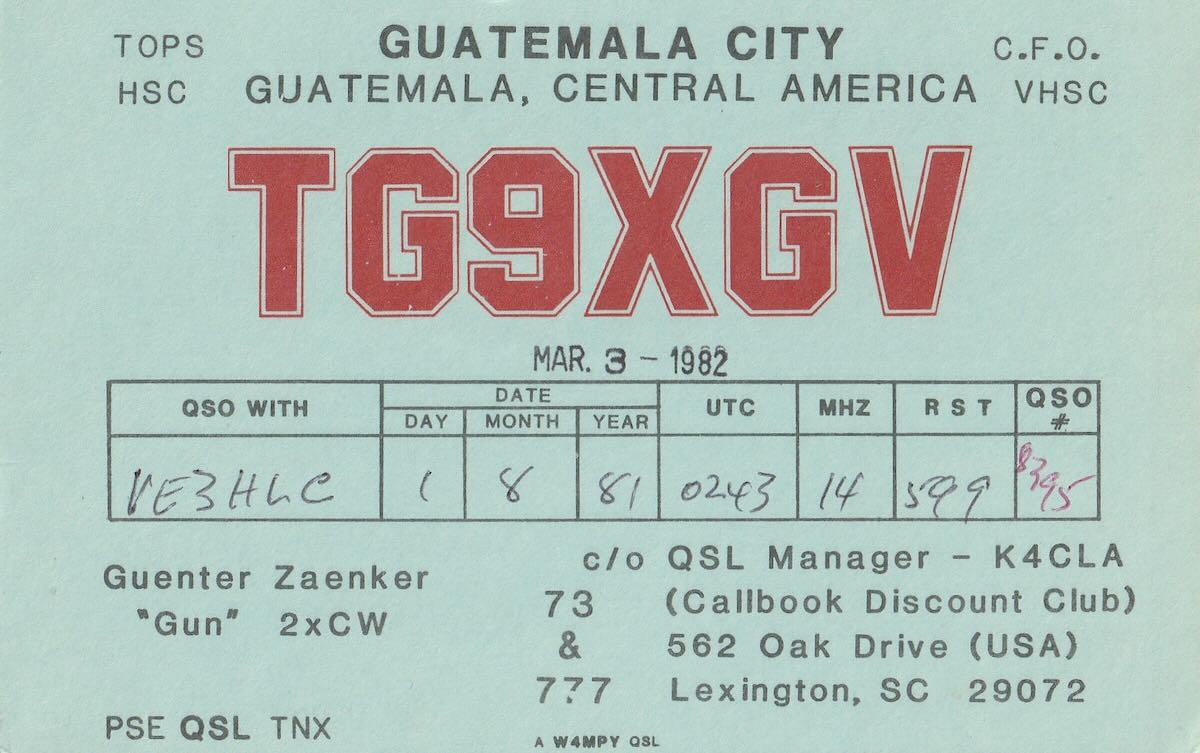 Shortly after receiving my amateur radio ticket in 1974, I made a contact with station PJ9BN, Jack Van Sciver on the island of Bonaire in the Netherlands Antilles.
Shortly after receiving my amateur radio ticket in 1974, I made a contact with station PJ9BN, Jack Van Sciver on the island of Bonaire in the Netherlands Antilles.
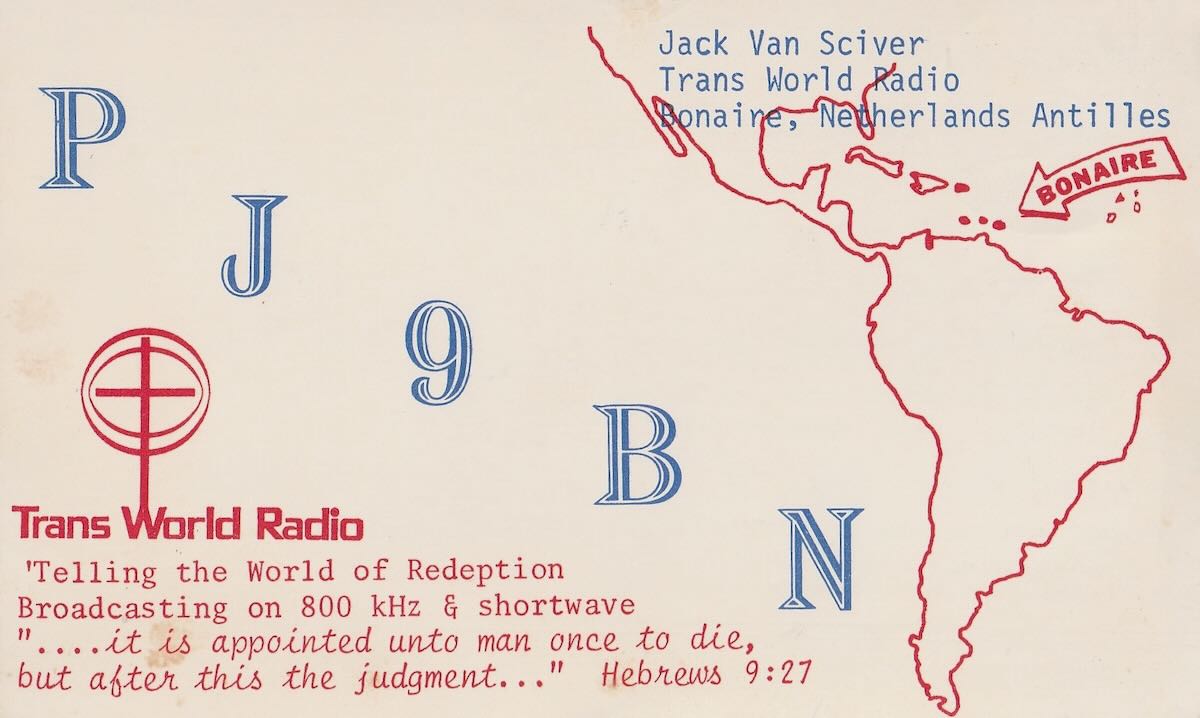 It turns out he worked at Trans World Radio, a broadcaster I had listened to regularly on the SWBC bands and it was quite exciting to discover this connection. Attached is a link to a recording I made of this station that same year as they were concluding a segment of their popular DX Special program:
It turns out he worked at Trans World Radio, a broadcaster I had listened to regularly on the SWBC bands and it was quite exciting to discover this connection. Attached is a link to a recording I made of this station that same year as they were concluding a segment of their popular DX Special program:
https://archive.org/details/trans-world-radio-bonaire
It seems that Jack is still going strong as I recently found this link to his current amateur callsign NA3F: https://www.qrz.com/db/NA3F
A final note, I had made a 2-way contact through the Oscar 6 amateur radio satellite (uplink on 2 metres, downlink on 10 metres) in 1976 with W.G. “George” Roach in Ottawa, Ontario.
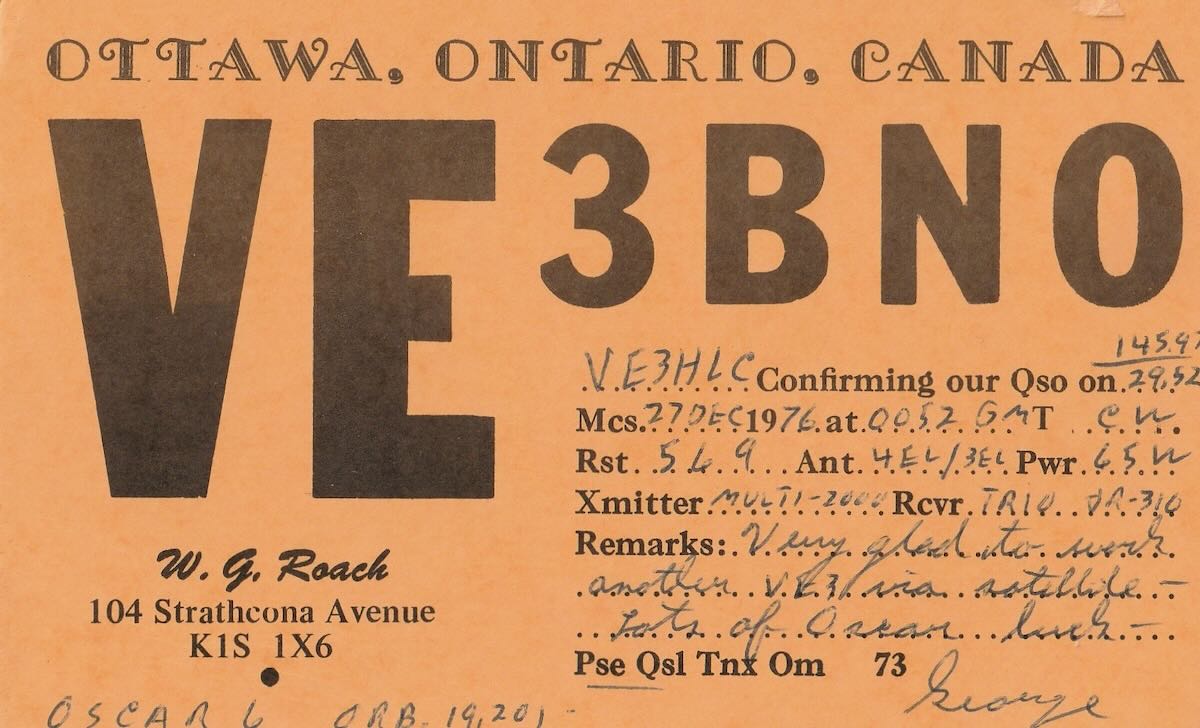 Some 11 years later, I was able to pick up station CFMO FM on 93.9 MHz, over 300 miles away, through some great ducting conditions. When I received a QSL from the station, it was signed by W.G. Roach who was the chief engineer at CFMO FM.
Some 11 years later, I was able to pick up station CFMO FM on 93.9 MHz, over 300 miles away, through some great ducting conditions. When I received a QSL from the station, it was signed by W.G. Roach who was the chief engineer at CFMO FM.
It certainly is a small world! I wonder how many others out there have experiences similar to mine?

